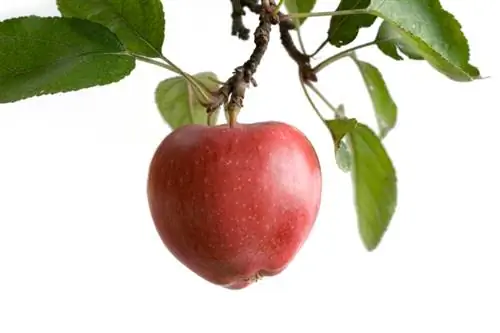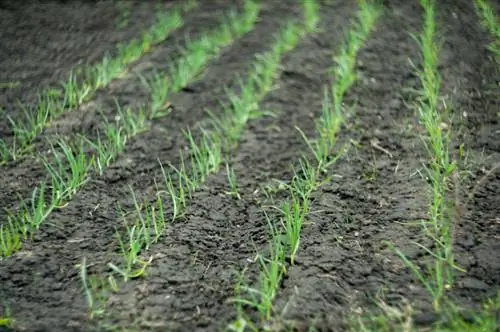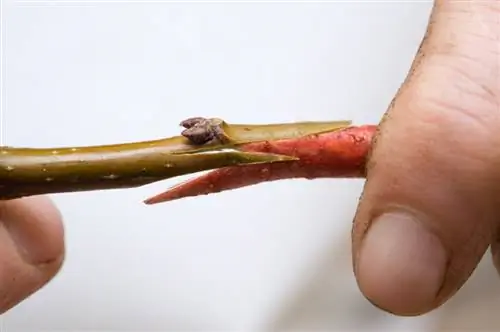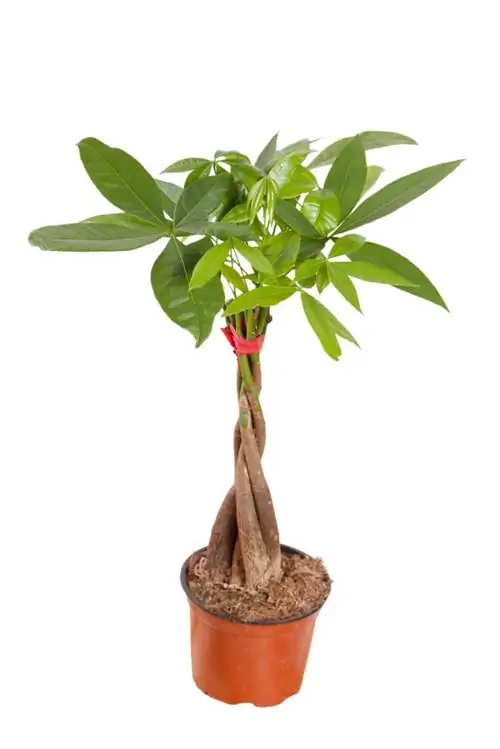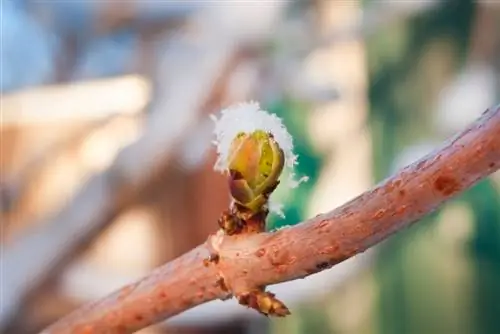- Author admin [email protected].
- Public 2023-12-16 16:46.
- Last modified 2025-01-23 11:19.
We speak of “refining” in apple varieties and other fruit trees when a scion of a productive variety is grafted onto a so-called rootstock. You can also try this as a hobby gardener with instructions.
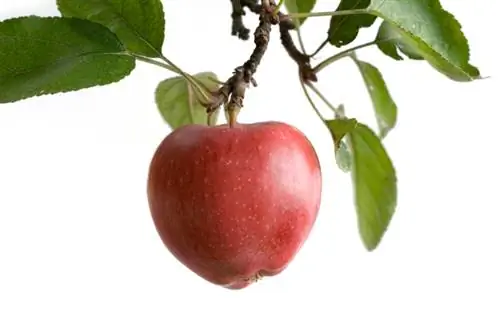
What does refining an apple tree mean and how does it work?
Refining apple trees refers to the grafting of a scion of the desired yield variety onto a rootstock in order to provide the tree with stability, nutrient supply and ideal growth height. To do this you need a suitable base, scions, secateurs and fixing material such as wax or ribbons.
Preparations for finishing
You can purchase special growing bases such as the M9 from specialist retailers to not only give the apple tree a stable base, but also a good supply of nutrients and water. As a beginner, you can also use cheaper seedlings for grafting, which you ideally grew yourself from seeds three or four years ago. For finishing you need:
- a suitable base
- at least one scion of the desired yield variety per tree
- clean secateurs
- Wax, raffia or plastic tape to fix copulation
The right time
The scions must be obtained during the hibernation period between December and March. Ideally, winter pruning of a high-performance apple variety produces sufficient usable scions for grafting. These can be cut straight, as they should be cut fresh at an angle for copulation with the growing base anyway. Shortly before budding in March, the crown of the tree used as a base is then cut off with an oblique cut. The scion, which is also cut at an angle, is placed and fixed accordingly. When the sap shoots in the spring, a connection can be created between the two, although there is no 100% chance of success.
Refining with a bud
As an alternative to scions, buds, which are also known as eyes in gardening language, can also be used for grafting. However, you shouldn't be afraid to ask an experienced gardening neighbor or someone from the regional gardening association to offer practical instructions. The so-called grafting requires a little more sensitivity than grafting with a scion. The bark base on the bud and base is cut into a tongue shape and inserted into one another.
Determine the growth habit of an apple tree with the grafting height
Even on purchased apple trees, the amount of grafting carried out is usually clearly visible. A thickening on the trunk usually indicates whether it is a half-stem or a standard tree. If the thickening is found near the ground or is not visible and the tree branching begins very deep, the specimen is referred to as a bush. Even if you try to refine an apple tree with a desired variety yourself using instructions, you can regulate the growth height by determining the height of the refinement on the base.
Tips & Tricks
With a trick you can use wild-grown seedlings and purchased apple trees to ensure that the tree becomes a quasi-self-pollinating specimen: You can graft one or more pollinator varieties onto vital apple trees at the same time and thus harvest several apple varieties from one tree.

